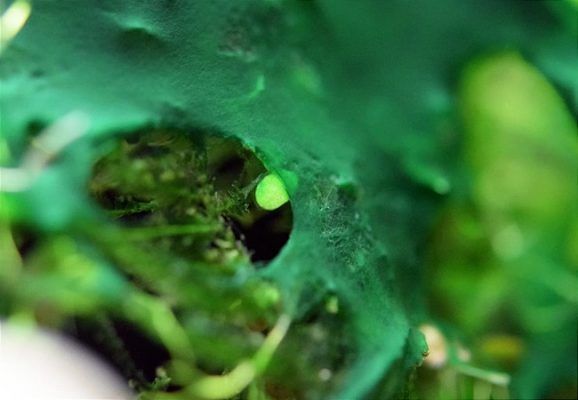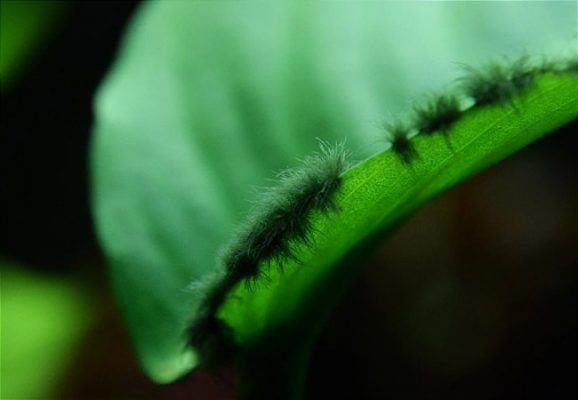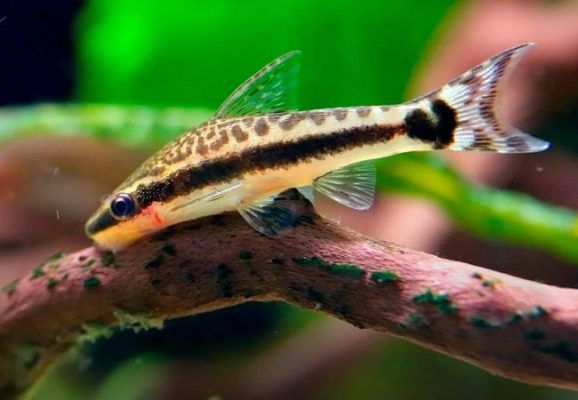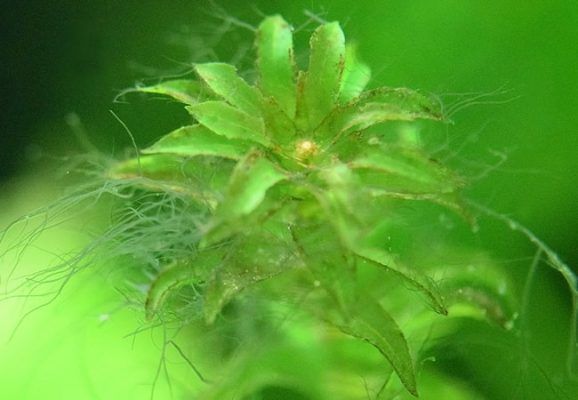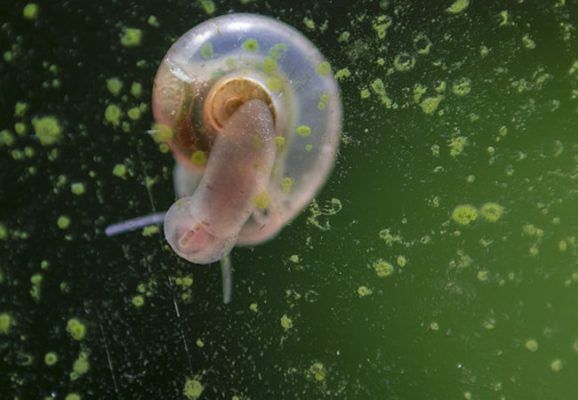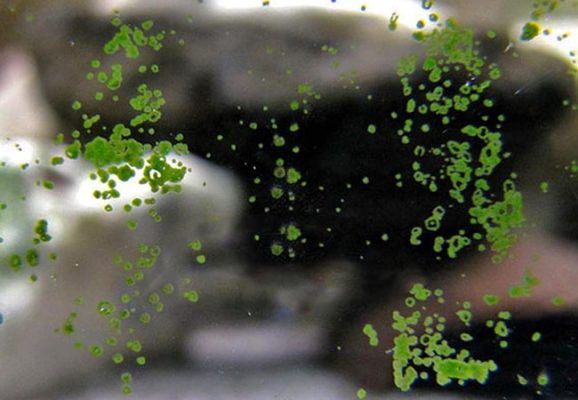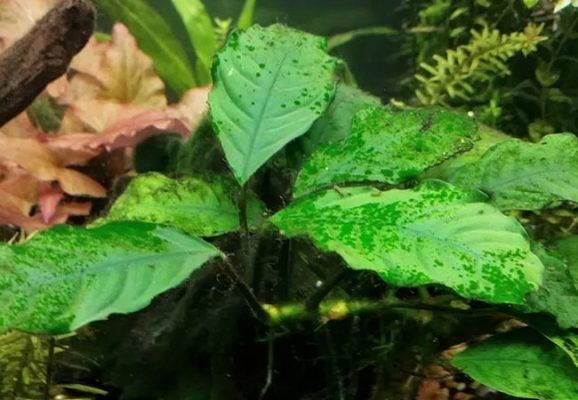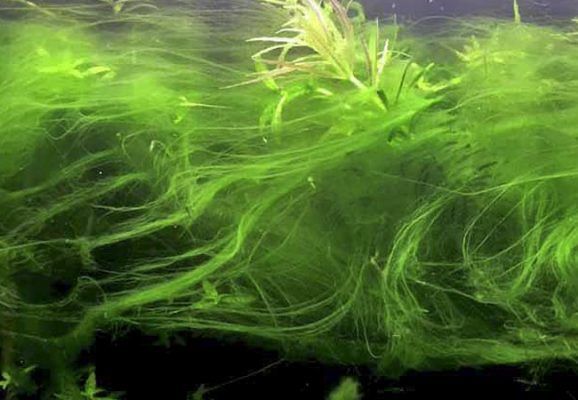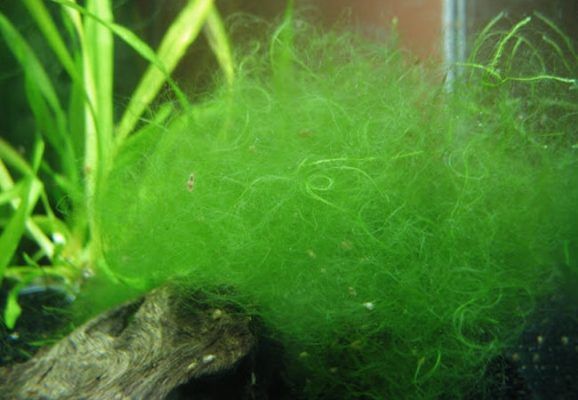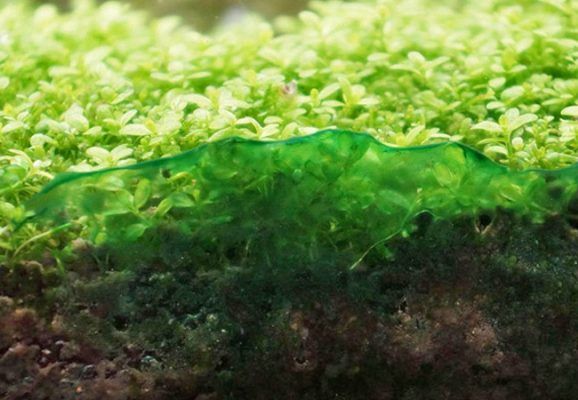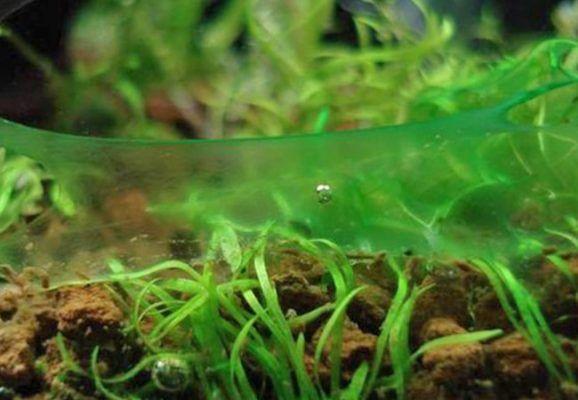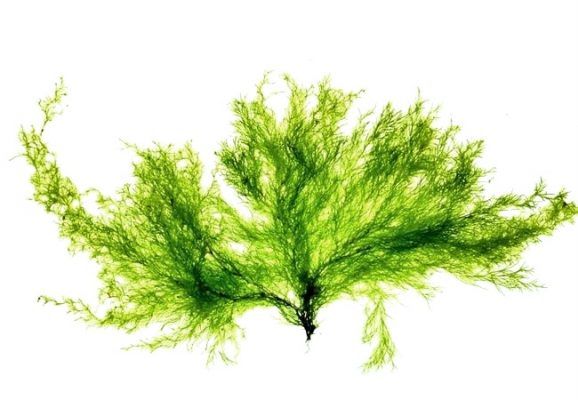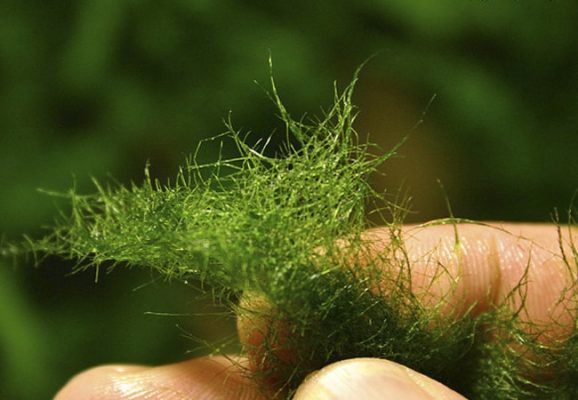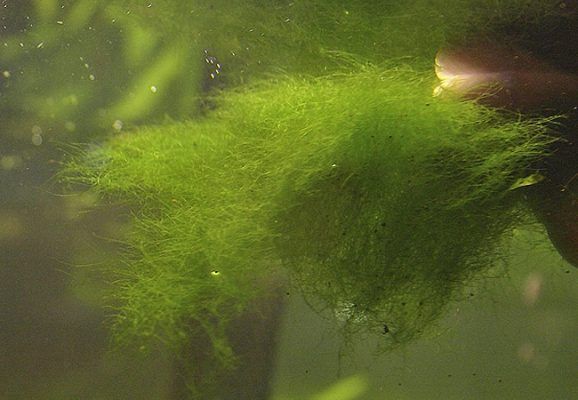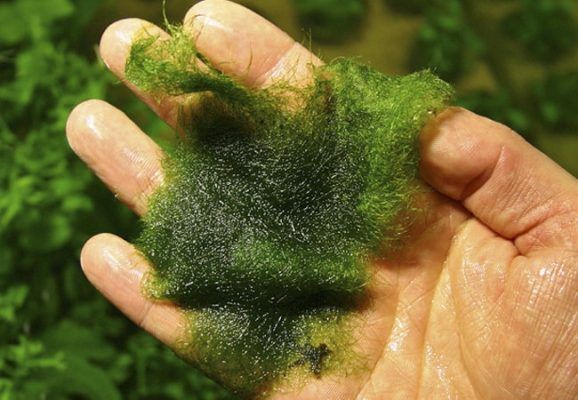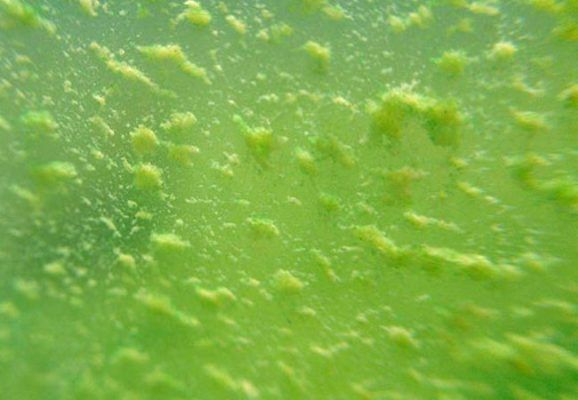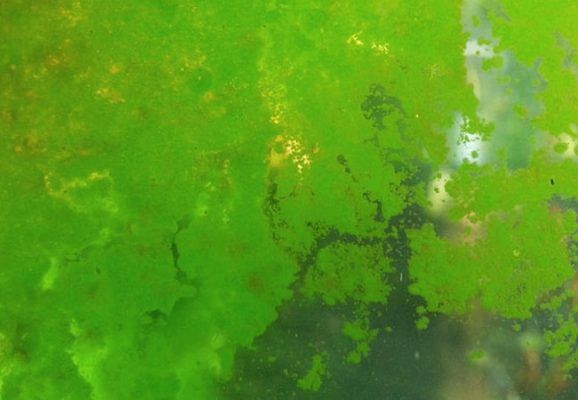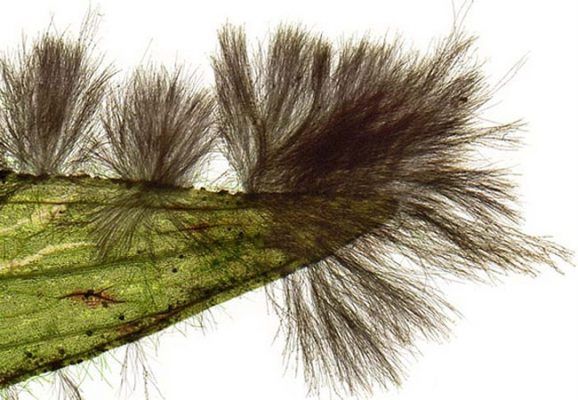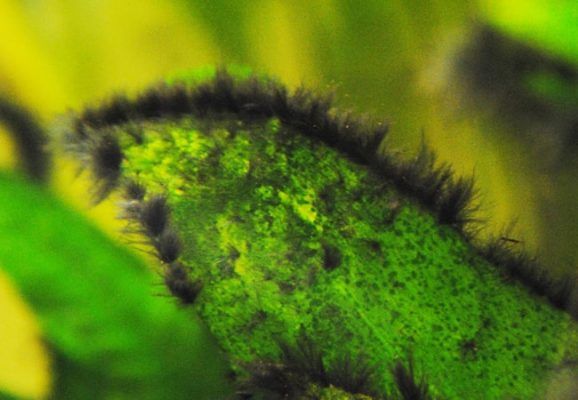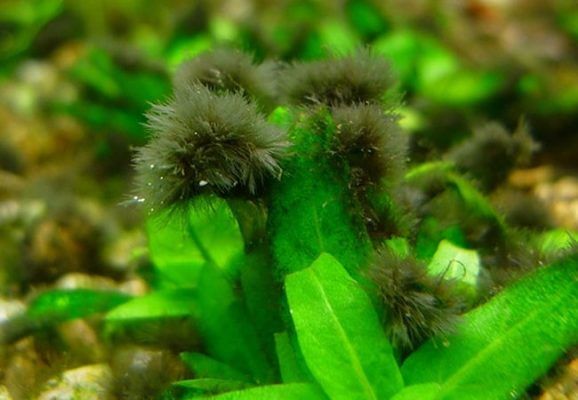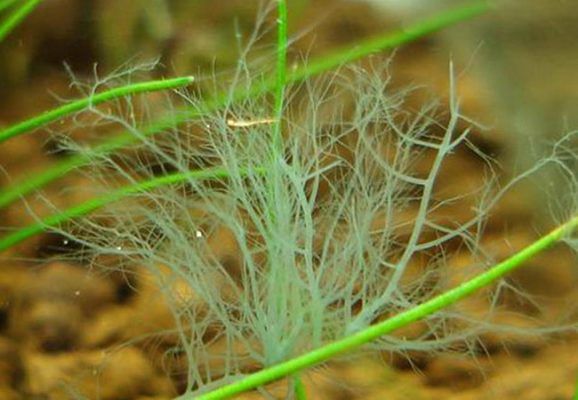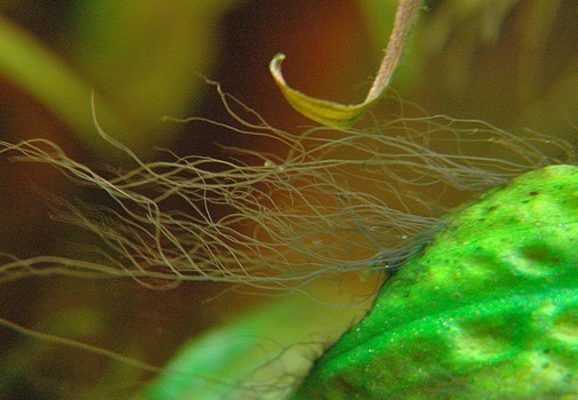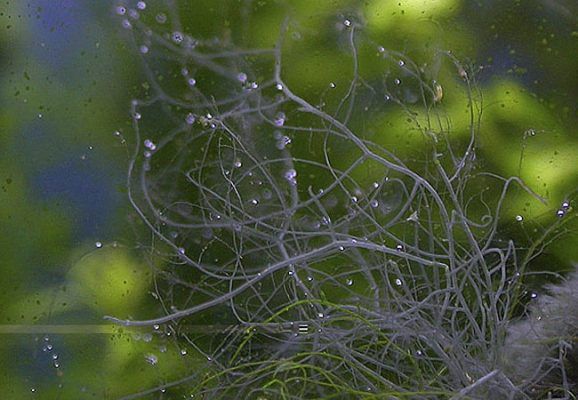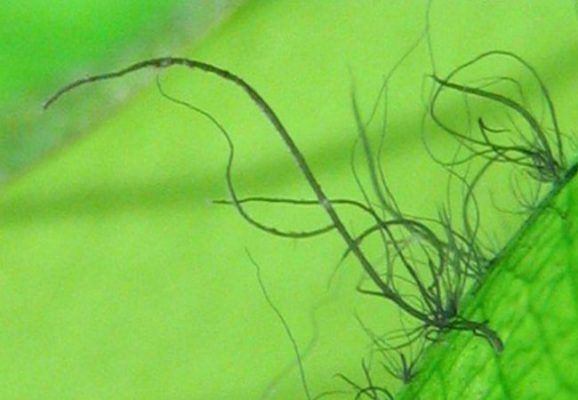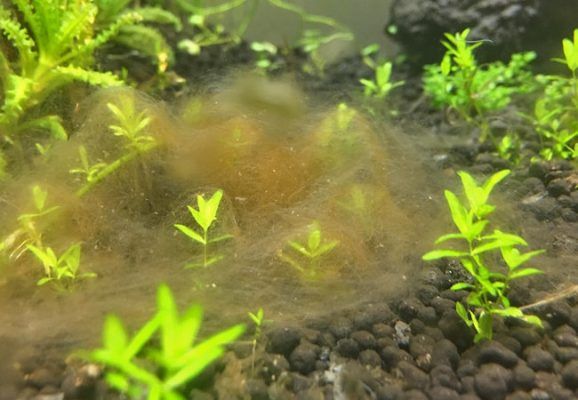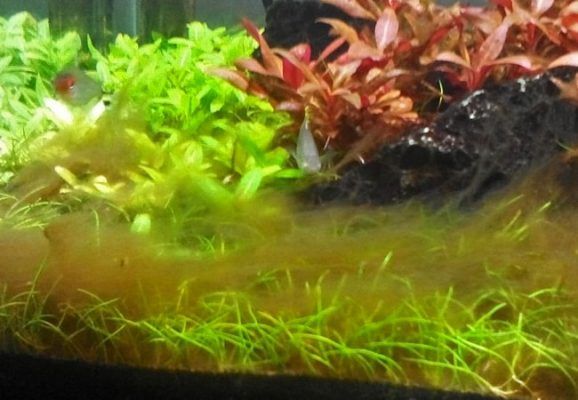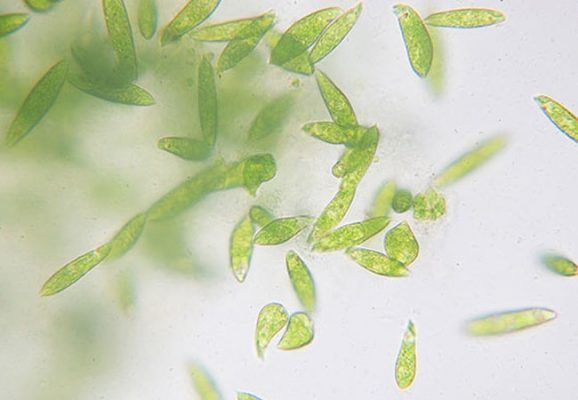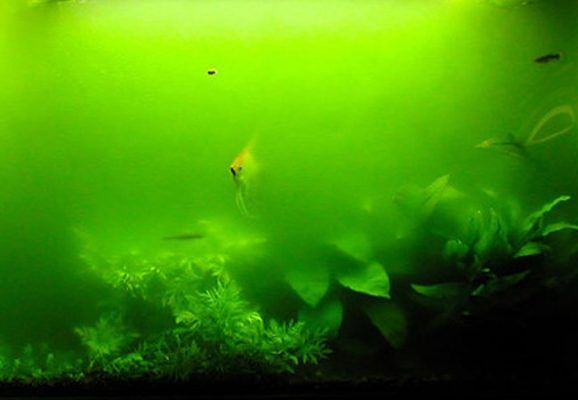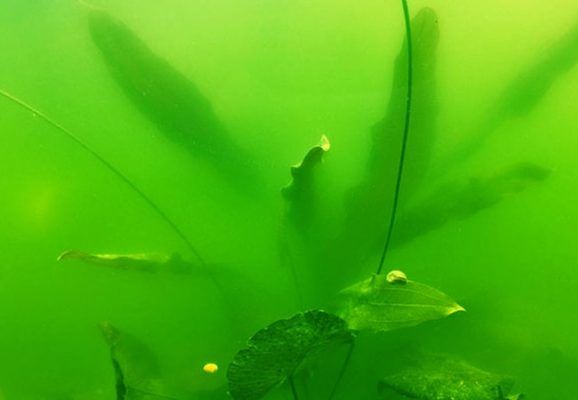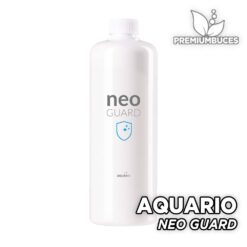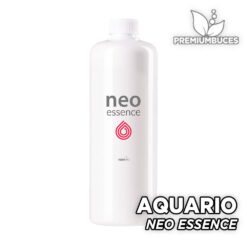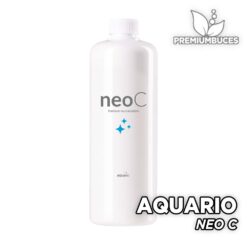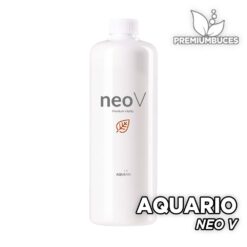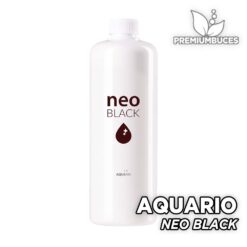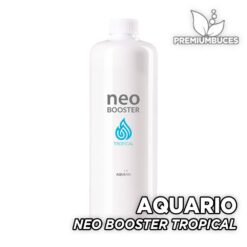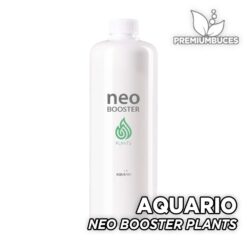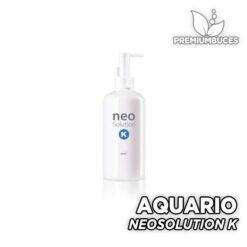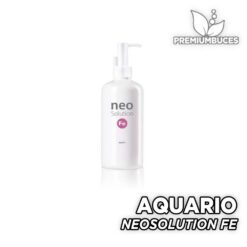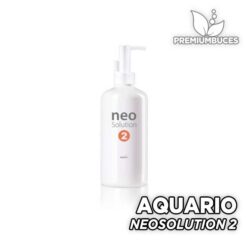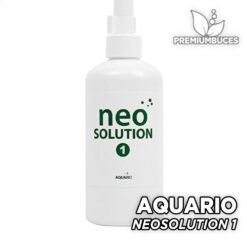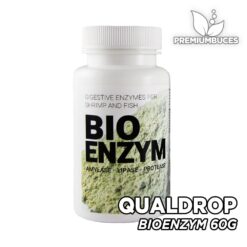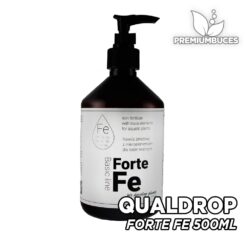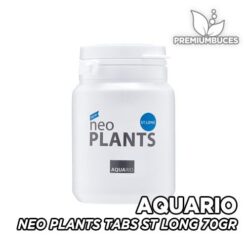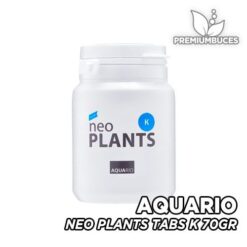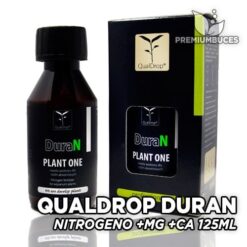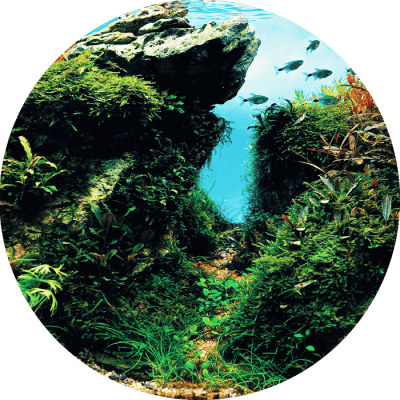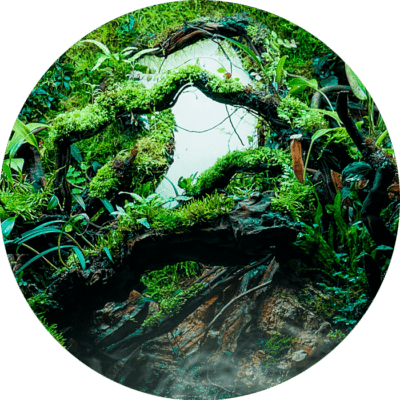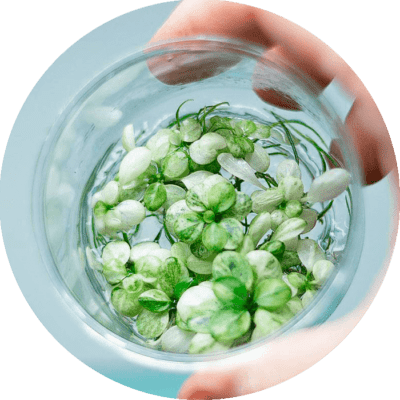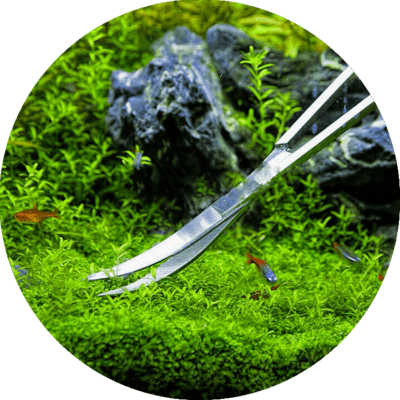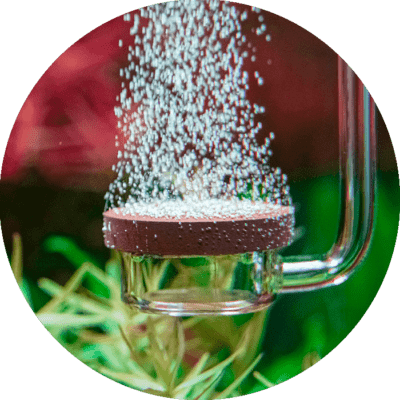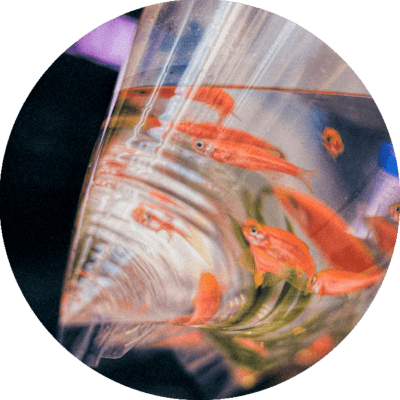The appearance of algae in the aquarium can be one of the biggest discomforts, whether in a community aquarium, an aquascaping aquarium, a biotope, or in shrimp or fish breeding aquariums. When faced with an algae infection, many hobbyists abandon or disassemble their aquarium. However, there are good ways to combat these pests, keep them under control and prevent them from spreading, we will explain them in this article.
WHAT ARE ALGAE?
The word "Alga”Is basically a general term for a large number of organisms different from each other. All non-moss plants (liverworts, true mosses and bryophytes) or higher plants (ferns, Lycopodiopsida and seed plants), are classified as algae. Among them we have microscopic unicellular organisms, thread-like shapes, as well as macroscopic algae, such as seaweed, some of which can reach a length of up to 60 meters. Algae are crucial for life on Earth.
Like germs, that is, viruses, bacteria, and other microorganisms, the smallest forms of algae are ubiquitous in our environment. There are some algae that passively float in the air, the so-called aeroplankton, to reach new places where they can inhabit. For us, this means that its omnipresence makes it practically impossible an aquarium that is absolutely free of algae.
CAN YOU KEEP AN ALGAE FREE AQUARIUM?
The reasons indicated in the previous point make it quite clear that algae are part of each of our aquariums. There are no aquariums without algae, despite the most perfect care. Of course, there are aquariums that do not have an obvious growth of algae, we cannot see the smallest microscopic algae (most of them are unicellular) that are mainly present in biofilms.
Biofilms form on all surfaces of the aquarium and, in addition to algae, contain different types of microorganisms. They are nothing to be removed, on the contrary, biofilms are very important for the biological balance of an aquarium. In addition, many inhabitants of the aquarium feed on it.
During the cycling of an aquarium, when the biological system is still looking for stability, a small algae outbreak it is completely normal. The diatoms they are algae that form during the first days or weeks, and after that, instead, they will appear green algae. In the long run, it is possible to have an aquarium without algae visible, and this can be easy even for beginners. You just have to take into account some basic aspects and find out the reasons why they appear.
WHY DO ALGAE APPEAR IN MY AQUARIUM?
As we have already mentioned, during the first weeks life of an aquarium algae formation and appearance is quite common. Normally, ecological balance has not yet been established. In this case, you should be patient until the biological system is balanced. The relationship of algae to aquatic plants is also not balanced at first. A stronger growth of the plant will cause the nutrients to be consumed by them, to the detriment of the algae. For this reason, it is quite important to start the aquarium with a good amount of plants And using fast growing stem plants can go a long way in consuming those nutrients at first.
Other ways to improve this process could be, add a filter already cycled or with filtering material that is already mature, or adding a large part of water from another aquarium that has been running for a long time, with this we will be able to introduce a large number of bacteria and microorganisms that will be in charge of degrading harmful substances from the first moment .
Until the aquarium finds its biological balance, we recommend control algae with specific measures for each type. First of all, it would be nice to add a good cleaning equipment As soon as possible and as soon as the water parameters allow, the most efficient algivores are shrimp of the genus Neocaridina and Caridina Japónica, snails of the genera Neritina, Vittina and Clithon and fish such as Crossocheilus Siamensis (Flying Fox) and Ottocinclus.
So, why algae appear in an aquarium that has been running for quite some time? In a planted aquarium this can happen due to a nutritional imbalance. In these cases, the algae will find very favorable conditions that will take advantage of their growth. We define “nutrients” as all the components of the four basic groups that comprise light, CO2 and fertilization (micronutrients and macronutrients). Long ago, people used to think that nutrients like phosphorus or nitrogen were the main responsible for algae growthThis idea has proven to be wrong. In an aquarium you can find and measure nitrogen in the form of nitrate and phosphorus in the form of phosphate. These nutrients are essential for plant growth. If found deficient, the plants will not grow well and cannot compete against algae. Therefore, a deficiency of nitrate or phosphate will not prevent algae, but a high concentration in excess of these elements. if it could be the cause of algae growth.
Aquarium plants should receive all the nutrients they need for growth with a good fertilizer routine, which is very important. Of course, the amount of nutrients must be balanced and it must also adapt to the situation. For example, plants do not need as high levels of micronutrients (iron and trace elements) during the aquarium cycling stage as they will later, when growth and the number of plants is greater. During the first weeks of an aquarium, you must adapt its subscriber routine and its photoperiod hours.
There are no established amounts of the amount of nutrients that must be added to the water column, these must be in line with the needs of the plants which having experience can be seen as deficienciesIf we do not have previous experience we can use tests for aquarium water.
When aquarium plants begin to grow, their nutritional requirements will increase, so you will have to adapt the subscriber routine to their needs on a regular basis.
AQUARIUM SEAWEED EATERS, CLEANING EQUIPMENT
Next we would like to introduce you some inhabitants of the aquarium they eat algaeWe will mainly focus on invertebrates such as snails and shrimp. Using them has several advantages: In addition to algae, these animals also eat manure, food scraps, parts of dead plants, and even dead animals. They can keep a clean aquarium, algae free and at the same time they will improve the ecological balance by further degrading organic matter. Therefore, no planted or Aquascaping aquarium should be without invertebrates that eat algae.
Sea Conches
Against the films of green or brown algae (diatoms, green dot, green dust) Snails of the genus or Neritina and Vittinas (Commonly called Neritinas) are the most recommended. These snails use their scraping tongue to remove all layers of algae of the aquarium surface, such as glass, equipment and decoration. These snails sometimes lay small white egg cocoons. The plankton larvae that hatch from them are really small. They will not become snails in a freshwater aquarium (they need brackish to marine water to do so). Unfortunately the eggs are somewhat difficult to remove as they are attached to the surfaces quite firmly. However, they will go away on their own after a while.
Clithon snails are, as a rule, slightly smaller than Neritinas, but they are just as effective. Have watch out for high levels of CO2 in the water, these little snails are relatively susceptible to them. The larger Neritines are more robust in this regard. However, snails of the Neritina genus have a slight drawback. By grazing on the aquarium glass, they tend to get a bit under the substrate, which can uproot newly planted groundcover plants.
As a general rule, one snail for every 10 liters of aquarium volume is fine.
Please note: these snails do not survive treatments against planarians or strong algicides.
Called Planorbis snails (generally species of the genera Helisome o planorbella) help keep the aquarium clean. They may be somewhat less efficient than the snails mentioned above, but they are much more robust and colorful, and can reproduce in a freshwater aquarium.
Shrimps
When it comes to eating filamentous algae, the most efficient shrimp is the so-called Japanese Caridina (Caridina Multidentata). These prawns are constantly busy grazing on all surfaces of the aquarium, and greatly reduce growing algae layers of decoration. However, its high level of activity can have an impact on the shape of the substrate. Especially in unplanted areas of the aquarium, where decorative sand is used, the activities of the Caridina Jáponica can lead to oscillations of the substrate. However, sandy areas can be kept in shape with a sand flattener very easily.
These prawns will not breed in a freshwater aquarium. Their larvae need brackish water to grow. Japanese Caridine can reach a relatively advanced age, and females can grow to a size of just under 6 cm. Amano prawns are active swimmers and need a large enough aquarium, the recommended minimum size is a standard 60cm aquarium. Also, they are social animals that should be kept in a group of six or more.
As a general rule, one Japanese Caridine for every 10l of aquarium volume is fine. If you have more algae, for example in a cycling aquarium you can temporarily double the number of shrimp.
Another great option to control algae, especially in small nano aquariums, are the small prawns of the Neocaridin genus. Unlike Japanese Caridines, they can reproduce in freshwater aquariums and must be kept in groups of more than 10 individuals, so in a short time we will have a large number of prawns beautifying and cleaning our aquarium. Unlike the Japanese Caridines, they do not eat long and resistant filamentous algae, but they love to graze on plants, substrate and decoration, keeping everything clean.
A large enough "cleaning kit", made up of snails and prawns, will make your aquarium is almost free of algae and will make maintenance much easier. The ecological balance in said tank will be much more stable.
ALGAE TREATMENT
Most of the time the appearance and consequence of a great growth of algae are caused by lack of aquarium maintenance as are the regular water changes every week. A regular water change of around 50% is vital for the correct development of an aquarium, and can prevent algae. In addition to adding fresh, clean water, changing the water removes contaminating substances and prevents certain elements from accumulating in the water. A 50% water change will keep the nutrients for the plants at a proper level and prevent nutrients accumulate in excess in the aquarium. This way you will avoid the peaks of nutrients and knowing your parameters it will not be necessary to test the water.
However, there may be other causes that are responsible for a nutritional imbalancesuch as a bad subscriber routine, lights that are too strong or that are on for too long, a CO2 bottle that has been left empty, or even sudden changes in parameters. A different light change or relocation. If you find a sudden rise in algae, you must first identify them correctly and then take the right measures. The most important thing is to try to find out what has caused the infestation and find a solution.
TYPES OF ALGAE AND CAUSES FOR WHICH THEY APPEAR
So you can know exactly what algae have appeared, in the next points we will go into more detail about the different types of algae, the easiest way to control each one and the most common reasons why they appear.
GREEN POINT ALGAE
All the green dot algae (almost always species of the family Coleochaete) are green algae in the form of spots that usually grow on the aquarium glass and sometimes on the decoration and older leaves of aquatic plants. They are often found in brightly lit aquariums. The main reasons why these algae appear are an excess of Nitrate or a lack of Phosphate. These small dotted algae are difficult to remove from the glass, the best way to remove them is with a blade cleaner or scraper.
These algae are attached to the substrate with great force. They start out as spots, which look a bit like little moles. Gradually, if your environment is favorable, the spots can spread and form extensive layers. They find each other mainly in the aquarium glass, but also in the equipment, decoration and leaves of the plants. Especially the slow-growing, durable and resistant leaves of all kinds of species of Anubias and Bucephalandras. Green dot algae are frequently found in heavily lit aquariums. They probably belong to the green algae of the genus Coleochaete, which have a plate-shaped multicellular "body".
It is not always easy to tell if you have green dot algae or other layers of green algae. The latter also tend to form flat layers and to cover surfaces fairly quickly. However, these green seaweed rugs do not form pronounced stains in their early stages. Surely, there are many species of algae that have this form of growth. Some green rugs can even be easily cleaned manually, while green dot algae are more difficult to remove. You will need a tool designed for this, with which you can scrape the algae off the glass.
Common causes
If you look at a growing population of these algae in a planted aquariumWe recommend that you delve a little deeper into the topic of phosphate fertilization. You will need a special water test to determine the phosphate content of the water in your aquarium. As usual, green dot algae appear if the phosphate content is too low or too high. If the phosphate reading shows that the level is too low, you can easily add this nutrient with the corresponding fertilizer.
Solution
If the content of phosphate is too high you must remove it by large water changes or using a filtering charge that reduces the phosphate little by little. If you add phosphate with a fertilizer, you should reduce the dose according to the values you measure. In general, regular water changes are important to prevent nutrient accumulation. We recommend that you change about 50% of the aquarium water per week.
After adjusting the phosphate content of the water, remove the green dot algae from the glassYou can take advantage and do it just before a water change and thus remove all the dirty water with algae spores. This will allow you to control the formation of new green dot algae. For now, they will have stopped, or at least begin to come under control.
Using a sufficient number of algae eaters it is an important factor to be able to control them. The most efficient algae eaters, for us, the most efficient algae eaters are snails Clithon sp. or the snails of Neritina sp. They scrape off the hard algae layers very thoroughly.
As part of weekly maintenance, you can clean the inside of your aquarium glass with a blade cleaner and easily remove green algae layers.
FILAMENTOUS GREEN ALGAE
All the most common green algae in aquariums freshwater growing in the form of a filament in different lengths. Depending on the species, its growth pattern differs slightly.
All the filamentous green algae they are usually made up of long green threads. There are several species that grow like this, these threads are quite soft and not very resistant. Its base does not adhere strongly to the substrate or surfaces but the filaments tangle around plants or decoration. The most common cause of the appearance of these algae is an excess of Phosphates. You can use a toothpick to roll them up and remove them manually. A decent number of Japanese Caridines will help maintain filamentous algae under control.
Normally, filamentous algae consist of long green threads which are often soft and loose. Some of them break if you try to separate a strand. They belong to different species of algae. To natural algivores like Amano prawns love to eat this kind of seaweed. The filamentous algae do not adhere to the substrate, they anchor with clamping organs and form rather thick cushions. In a strong current, the individual strands float in the water and get trapped in the decoration or plants, so it is how filamentous algae spread.
Common causes
This type of seaweed It is usually seen in planted aquariums that are in the cycling phase. During the first few weeks, the microbiology of newly installed aquariums is quite unbalanced. The longer an aquarium has been operating, the more stable the ecological system becomes. Little by little, the plants will take advantage. Therefore, it is very important to have as many plants as possible from the beginning.
Una algae growth in a planted aquarium may be due to nutrient imbalance. Quite often, a deficit of nitrate or CO2 is the root of the problem, or an increase or change in the intensity of light (when you have installed a screen over the aquarium), sunlight or excessively long lighting phases.
Let's look in more detail at most frequent causes of filamentous algae:
The CO2 content of the water must be controlled with a dropchecker constantly. Is the indicator inside the dropchecker working correctly? Replace it every four to six weeks to make sure the reagent always shows the correct color. Ideally, if the amount of CO2 dissolved in the water is good, the indicator reacts with a green tone.
Too much light in relation to the number of plants can be the cause of a filamentous algae outbreak. Did you change to another lighting system? If you increase the intensity of the light, you always need to increase the supply of nutrients as well. The light intensity should correspond to the requirements of the plants.
Is the aquarium receiving more daylight due to relocation or because the position of the sun has changed seasonally? Is could be another cause of the appearance of filamentous algae.
Under moderate to strong light, the lighting phase of the aquarium should not last more than 10 hours maximum. For low-light aquariums, the maximum duration of the lighting phase should be around 12 hours.
Very often plants stop growing when they don't have enough nitrogen at their disposal. Nitrogen can be measured in the form of nitrate. Stagnant plant growth often allows algae to take over nutrients. With a liquid fertilizer the nitrate content of the water can be directly increased without strongly raising other nutrients such as potassium or phosphate. Raise the amount of nitrate to a higher level by moderately administering to create a reserve of nitrate. To keep the nutrients at the desired level, adjust your fertilizing routine, if necessary use a nitrogen-only fertilizer.
How can they be created nutrient imbalances due to lack of aquarium maintenanceWe would like to point out that a regular change of water is vital. We recommend exchanging at least 50% of the aquarium volume per week to avoid the accumulation of harmful substances in the water.
Solution
Here we offer you a variety of possibilities to be able remove these algae.
Initially it is important to have a good cleaning team made up of algae-eating animalsThey will help you keep this type of algae under control.
If the aquarium has few plants or slow-growing plants, we recommend adding new and fast-growing plants, such as stem plants. This measure makes perfect sense, especially when your plants are weakened by algae infestation.
If the algae are at specific points in the aquarium, you can remove filamentous algae quite easily simply by rolling them onto a skewer with a rough surface. Some of these points may be siphoned during a water change. If the algae continue to appear at the same spots even though you continue to remove them manually, try tarnishing them with glutaraldehyde or hydrogen peroxide (hydrogen peroxide).
If the aquarium is completely covered with filamentous algae, a treatment of reduce light intensity it's a fairly easy and non-invasive way to reduce algae in an aquarium.
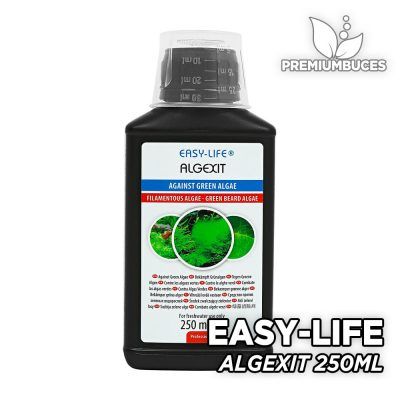
If none of these measures takes effect, your last resort is to treat the entire aquarium with a algicide like glutaraldehyde or a treatment with hydrogen peroxide. Many fans of planted aquariums have had good results with algicides. However, keep in mind that using them for a long period of time can have a negative effect on the microbiological balance, which will seriously damage it. These remedies can also damage some more sensitive aquarium plants or hinder their growth significantly. Some animals can also be affected when we use this resource in large quantities. Thus, treat the entire aquarium with an algicide it should always be the last option.
CYANOBACTERIA ALGAE
From a biological point of view, cyanobacterial blue-green algae they are not algae but bacteria. Unlike other algae, these cyanobacteria (also called blue bacteria) do not have a nucleus, however, like plants, they can photosynthesize.
Many different types of cyanobacteria, some float in the water (for example, some species of the genus Microcystis) and others form gelatinous groups in the wet substrate (Nostoch). In the aquarium hobby, we know cyanobacteria as dark green, blue-green to almost black layers in aquatic plants, decor, or substrate. Sticky to the touch and are sometimes called silty algae. Its bad smell is characteristic: The smell can be described as "disgusting", "earthy" or "silt". Most often, blue-green algae belong to the genus Oscillatory (filamentous cyanobacteria). Small populations of this algae, for example in the fringe between the substrate and the front glass, are quite normal and there is no reason to worry.
Common causes
As with algae, nutrient imbalance may be the reason for a cyanobacterial outbreak in a planted aquarium. In many cases, the reason may be a very high phosphate level, sometimes in combination with a nitrogen deficiency (more specifically, a nitrate deficiency).
On the other hand, regular water changes are important to prevent this type of nutrient spike. We recommend changing around 50% of the aquarium water volume weekly. In a planted aquarium, a balanced fertilizing routine is essential for the proper and healthy development of plants. Quite often, carbon (CO2) and macronutrient (NPK) deficiencies are the reason for the appearance of algae.
Blue-green algae are bacteria, and one of the reasons for a cyanobacterial infestation may be due to an alteration in the balance of the so-called microflora. This term is applied to all the bacteria and microorganisms that inhabit the biofilms of the aquarium. If these other microorganisms are present in insufficient quantities or if there is an imbalance between them and the cyanobacteria, the cyanobacteria can multiply significantly, since they lack competitors for nutrients. This phenomenon occurs more frequently during the cycling phase of an aquarium, as the biological system is still searching for its balance. In this case, you should add beneficial bacteria to the aquarium using additives containing these bacteria, such as Azoo Ultra Bio Guard, Qualdrop Biobacter or Seachem Stability. It may also be helpful to add a little filter material from another aquarium that is already mature and stable.
Solution
The little ones cyanobacterial buds they can be easily removed with a siphon, as they do not adhere firmly to the substrate. If you notice that the blue-green algae always repeat in the same places, you can easily combat them by spraying them with hydrogen peroxide (hydrogen peroxide).
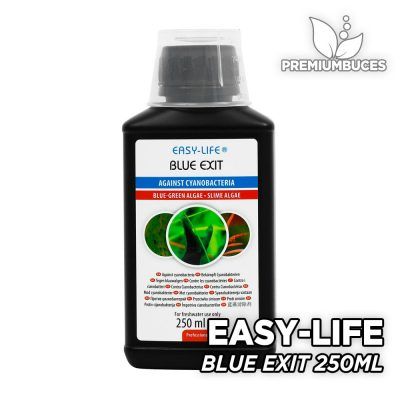
In the event of a stronger outbreak appearing, we recommend the so-called blackout treatment, which consists of leave the aquarium lights off for a few days whenever the demands of the plants allow it.
Maybe it can also be due to poor water circulation, adjusting the inlets and outlets of the filter so that the water travels much more fluidly we can avoid the appearance of these algae at a specific point.
Another method against cyanobacterial blue-green algae What works a lot is the treatment with antibiotics, Erythromycin gives very good results and is not harmful for bacterial filter colony, fish or invertebrates.
CLADOPHORA ALGAE
The species of the genus Cladophora sometimes they are also called branched algae. A species not yet identified, that for the moment, not too common in aquariums. This green algae she is very stubborn. Forms short, stiff green filaments that branch off in many places, this form of growth causes the Cladophora is easy to identify. It also has a characteristic odor that can be compared to that of fungi and mushrooms. Its cell walls seem to be harder than others, and algae is not eaten by the most common algivores.
After a while it forms dense locks. These tufts usually settle between the leaves of aquatic plants, upholstery, or moss.
Common causes
Generally, small pieces of algae are introduced with aquatic plants from other aquariums. A nutrient imbalance can cause Cladophora to spread massively.
Solution
Interestingly, this algae species is not very susceptible to nutrient parameter adjustments. If Cladophora has expanded in an aquarium it is very difficult to get rid of it. Optimizing your subscriber routine has almost no effect. If your aquarium only has a small one Cladophora outbreak, remove the algae in a complete and consistent way with a pair of tweezers of good length. To prevent fragments from establishing new populations, turn off the filter and current in the aquarium while you remove the algae. Spraying small groups of algae with glutaraldehyde or hydrogen peroxide has proven to be quite efficient in controlling this algae.
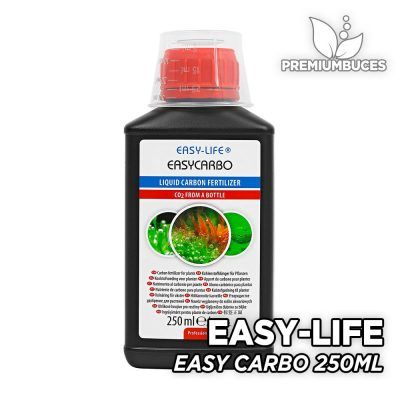
Un glutaraldehyde treatment will significantly reduce the algae population, so it will disappear from view. But it probably still persists in the biological system of the aquarium. If you use plants or aquarium decorations that were once infested with Cladophora algae, it is very possible that you infect other aquariums with them.
If you want to make sure completely pluck the root the Cladophora. We recommend restart the aquarium. Do not reuse any of the plants or the substrate, and Disinfect equipment and urn before reassembling.
GREEN DUST ALGAE
All the green dust algae they resemble other hard seaweed movies like the green dot, however if you touch them they are somewhat thinner and they can be easily removed simply with a cloth or with the movement of water. If you try to remove them manually, you will have a rather unpleasant green and cloudy powder in the water column, which settles after a few hours and forms new layers.
In aquariums we can find different types of green algaethese layers are known to be made up of different species of algae. However, aquarium hobbyists generally speak of "green dust" when said green layer can be wiped off the aquarium glass with a finger, sometimes even removed by shaking water. It is like a layer of loose powder.
After the loose and somewhat slimy layers have been removed, tend to settle on other surfaces in the aquarium (often on the glass, but sometimes also on the surface of the water) in a short time, usually within a few hours or days. These layers, which are made up of microscopic algae whose species has not yet been identified, only adhere to surfaces very loosely and can actively move in the water stream.
Other layers of green algae, which adhere to the substrate more or less firmly, do not populate the glass and decoration as quickly. Especially classic green dot algae are much harder and much more difficult to remove than green dust algae.
Common causes
Apparently, a massive appearance of these algae is caused by very sudden changes in an aquascaping aquarium or planted aquarium, such as drastic changes in light, the technical equipment or the number of plants after a severe pruning session. Some amateurs have experienced that large spikes in nitrogen, caused by magnesium nitrate or urea, can trigger an Alga Green Dust infestation.
It is also important adjust the amount of nutrients paid to the actual requirements of your aquarium plants. Especially when it comes to carbon (supplied through CO2) and macronutrients (NPK), imbalances in nutrient supply can cause algae growth.
Solution
If you have a problem with Green Dust Algae, just try to wait. Don't remove the algae layers, wait at least three or four weeks without doing anything. As a general rule, the life cycle of these algae has ended and the layers become weaker. The algivores, like some species of snails, will eat them.
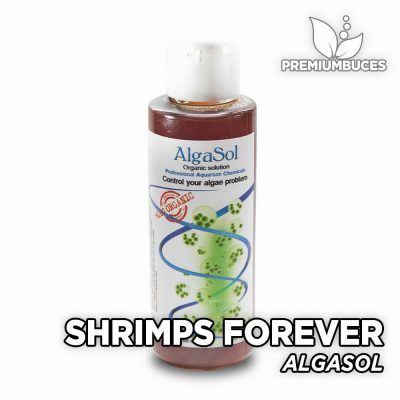
Alternatively, you can lower the water level in your aquarium as much as possible after the algae life cycle has ended and after clean the algae remains from the glass. Do not remove the layer during the waiting period of three to four weeks, as the algae will release spores that will start a new life cycle as soon as they settle.
A more radical measure would be a complete treatment of the aquarium with hydrogen peroxide (hydrogen peroxide).
ALGA BRUSH OR BLACK BEARD
All the black beard seaweed or algae brush (Audouinella sp. and Rhodochorton sp.) They belong to the group of red algae, like the deer horn algae (staghorn). However, its natural color is not red, but ranges from dark green over gray to deep black. If you put these algae in alcohol, they will turn reddish. This is easy proof that the algae you are dealing with is actually red algae.
All the beard algae cling tightly to the surface where they grow, as in the equipment, the edges of the leaves of aquatic plants, the decoration of the aquarium or even the gravel of the substrate. The tufts of seaweed look like a beard or a brush, and that's where its name comes from.
Common causes
Blackbeard algae can be found in any type of aquarium, as well as densely planted Aquascaping aquariums for different reasons. In aquariums with a high number of fish and almost plants or without plants, the black color variant is often seen. In these aquariums, the reason for their appearance is a high organic contamination of water, due to overfeeding in combination with little water change. In many cases, the algae population in these aquariums grows exorbitantly if accumulates a lot of dirt on the filter and the substrate. Filter cleaning and the use of a gravel cleaner or siphon should help to remove dirt from the substrate.
Very often, there is no CO2 system in such an aquarium. The content of free carbon dioxide (CO2) in water is believed to play an important role in the appearance of red algae like beard algae. If there is a CO2 deficiency, these algae can take up the carbon they require from hydrogen carbonate, and much more easily than aquatic plants, they can separate carbon from hydrogen carbonate ion, thus creating hydroxide ions, which raise the pH . In this process, the so-called biogenic decalcification takes place, the lime (calcium carbonate) precipitates, which in turn is used by algae to strengthen their cell wallss. They become tougher and less attractive to algae consumers.
Specially in aquariums populated with only fish where they feed a lotBut really for all aquariums, think about it, regular maintenance work that includes a weekly water change is very important. If you are not consistent with water changes, unwanted substances can accumulate. We recommend fairly large weekly changes of at least 50% of the aquarium water.
In Aquascaping or planted aquariums, a balanced supply of nutrients is vital for plants. In often planted aquariums brush algae appear when there is a micronutrient imbalance (trace elements, especially iron). If you are already using an iron fertilizer, you should reduce the dose. Measure the iron content of the water with a test. It should be around 0.05 to 0.1mg / l. Carbon (CO2) and macronutrients (NPK) must also be added.
If you have beard algae in your aquarium, and the plants show signs of iron deficiency at the same time (the tips of the shoots are much lighter in color than the rest), reduces the amount of iron added to the aquarium. Only add standard iron fertilizer with trace elements once a week and in moderation.
Solution
You can use hydrogen peroxide or glutaraldehyde in the water column. After a few days of use, the beard algae should turn whitish or pink. If this has happened, you can stop adding these liquids. Dead algae are eaten little by little by algivores (such as prawns and snails).

If this treatment is not successful, you can try to treat the algae individually, i.e. treat algae in localized areas and specifically with an algicide, glutaraldehyde or hydrogen peroxide.
ALGAE DEER HORN STAGHORN
All the Staghorn algae (Compsopogon sp.) They belong to the group of red algae. They are easy to identify, as their growth shape somewhat resembles the antlers of a deer. They show different shades of gray. If you dip a piece of these algae in alcohol, they will take on a red color.
All the deer horn algae They are usually found in aquarium decorations, equipment, and leaf outlines of aquatic plants. They are difficult to remove manually. These algae appear to be unappealing to most prawns and fish that eat algae.
Common causes
In planted aquariums that add liquid fertilizers, the appearance of these algae is often an indicator of an iron overdose. Adjust the amount you add and reduce it. If you have a water test on hand to measure iron, check the amount of iron dissolved in the water and make sure you are not overdosing
In addition, plants must receive large amounts of CO2 and macronutrients (NPK) in a balanced way. If one of these elements has an insufficient dose, the growth of the plants is limited, according to the law of the minima, unused nutrients like iron and trace elements can accumulate and form algae. Such an unbalanced supply of nutrients may be the cause of appearance of red algae such as deer horn or black beard algae.
As nutrient imbalances can result from low maintenance, we would like to point out the importance of regular water changes. We recommend that you change about 50% of the aquarium volume per week. This prevents the accumulation of nutrients and other substances.
Solution
Have you had problems with Staghorn algae in your aquarium? We recommend adding glutaraldehyde. After a few days of treatment, the staghorn algae will turn white or pink. If they show this discoloration, you can stop the treatment. Dead algae are eaten by shrimp and other aquarium inhabitants.
If this measure does not work, you can directly treat the algae again, with hydrogen peroxide (hydrogen peroxide), following the nebulization method. This is a more direct way of treat staghorn algae.
BROWN OR BROWN DIATOMEA ALGAE
All the Brown algae also known as Bacillariophyceae. they normally form brown layers that cover all surfaces of the aquarium. They are called brown algae because of their color. Often, diatom algae form during the first few weeks in the life of a new aquarium, and in most cases they go as they came, on their own.
All the diatoms form layers of brown algae They normally appear in a newly assembled aquarium after about one to three weeks. These algae cover all surfaces of the aquarium, such as the substrate, equipment, plant leaves and decoration. They can form brown layers on aquarium glass in low light. Diatoms are also called bacillariophyta. This class of algae contains many genera and species. Hobbyists often call them "brown algae" because of their coloration. However, this term is not entirely correct, since true brown algae (Phaeophyceae) are another group that, with some exceptions, does not reproduce in fresh water.
Common causes
The onset of diatoms during the cycling phase it's completely normal, and no need to take any countermeasures. As a general rule, green algae displace diatoms a few weeks later in the life of your new aquarium, and will not reappear.
Diatoms need silicate to grow, more precisely, silicon dioxide, since they build their box-shaped cell walls from this substance. If you use tap water with high levels of silicate, diatoms have enough material to reproduce in a new aquarium. The lack of competitors like other algae and microorganisms will increase their reproduction rate.
Solution
As mentioned previously, the diatoms that have formed during the cycling of the aquarium will be gradually overcome by other species of algae, especially by green algae. To keep your growth under control, you can easily remove the brown layersFor example, extracting them with a siphon. To much seaweed eaters also love to eat diatoms, including all the snails and prawns that feed on algae.
If you have a permanent problem of diatoms in the aquarium Despite having a sufficient number of algivores, you must verify the silicate levels in your aquarium water with a silicate test. If these are too high, there are several possibilities to lower it and therefore eliminate the main source of reproduction of the diatoms. Can use a reverse osmosis system to create water that does not contain traces of silicates, or alternatively use special filtering charges that decrease the silicate content in the aquarium water directly. Please note that these products will also significantly reduce the phosphate content of the water, which can have a negative effect on plants.
GREEN WATER FLOATING ALGAE
Green water is caused by microscopic algae that dye the aquarium water a greenish color. In a few days they can significantly inhibit the visibility and transparency of the water. These green algae are generally found in genera Chlorella, Ankistrodesmus y scenedesmus, although there are more floating algae from other groups, such as the flagellated protists of the genus Euglena.
In nature, floating algae are part of the so-called phytoplankton, they serve as important food for animals that feed by filtration, such as daphnia, mussels and mysid shrimp. These algae float freely in the water and do not deposit on surfaces such as glass, decoration or aquarium equipment..
Common causes
The reasons for a sudden outbreak of suspended algae They may be due, for example, to seasonal changes, such as a rise in temperature during spring and summer or strong sunlight.
In a planted or Aquascaping aquarium, they are fertilized, often nutrient imbalances are the root of an algae problem. Especially in the field of carbon (supplied with CO2) and macronutrients (NPK), a balanced fertilizer is crucial for aquatic plants.
Commonly, algal blooms occur during the cycling phase of a newly installed aquarium. When the biological system in the aquarium is young and is finding its balance, algae can take advantage of that situation and spread quickly. If the new aquarium has been planted well, and the aquatic plants that are there receive enough nutrients, it is only a matter of time until the algae are overcome by the plants.
Solution
If you have problems with green water, we can recommend using an ultraviolet lamp. To work as efficiently as possible, the unit must be connected to a separate pump with a low flow rate. If you connect it to the external filter, the water flow is usually quite high. Therefore, UV rays work better and remove more algae suspended in the water if the contact time is as long as possible. After a few days, the algae outbreak should stop. Change as much water as possible to remove most of the dead algae and avoid contaminating the water and disconnect the UV light unit. You should not leave it running permanently in a planted aquarium, as it can have a negative effect on the complex agents used in some fertilizers for aquatic plants.
As an alternative, you can make several large water changes, if necessary in combination with a blackout treatment.
In aquariums with few or no fish, you can use algivores that eat floating algae, such as daphnia in sufficient quantities.
WHITE ALGAE TURBIA WATER
Like green water, a bacterial bloom can greatly cloud aquarium water. However, the water is not green but a milky light gray. This phenomenon not due to an algae infestation but to strong bacterial growth or some bacterial filter colony problem.
If you have a bacterial bloom in your aquarium, the water becomes cloudy and it becomes milky in a few days. The clarity of the water is significantly reduced, but no floating particles visible to the naked eye. This fact allows you to exclude turbidity due to floating debris and dust. If your water is cloudy due to small particles, you can easily remove them with suitably fine filter media. Cloudy water during a bacterial bloom is due to strong proliferation of bacteria that float freely in the water. Sometimes the white spot in the water can turn green. After an additional algal bloom occurred which was caused by cloudy water.
Common causes
Bacterial blooms frequently appear during the cycling phase of an aquarium. The microbiological balance has not yet been established, since the aquarium is still quite young and the environment inside the aquarium is more susceptible to these phenomena. During the cycling phase there may also be more pronounced algae growth. This is no reason to worry, but rather a fairly normal phase.
If a bacterial bloom suddenly occurs in an aquarium that has been running for a long time, the reason for this may be due to seasonal changesFor example, such as temperatures during hot months, prolonged exposure to sunlight or a large amount of decomposing organic matter.
Solution
The only countermeasure that makes sense is temporary use of a UV light unit. This unit kills any microorganisms in the water that is passed through by UV light. The slower the current within the unit, the better the results. Therefore, we recommend connecting the UV purification unit not to its external filter, but to a separate pump with a much slower flow. After some days, the water should be crystal clear again. After this, we recommend changing the maximum amount of water possible to remove most of the dead bacteria and reduce the organic contamination in the water that results from them. Once finished you can save the ultraviolet purification light. Especially in aquariums planted with the corresponding nutrient levels, prolonged use of a UV purification unit can have negative effects in the complex elements of some aquatic plant fertilizers, which in the long term would have a lesser effect than desired on plants.
If the reason is an excess of waste or decomposing organic matter such as dead plants or food remains, a recommended option is to add nitrifying bacteria, which will help us to degrade this matter especially in the first stages of starting the aquarium.
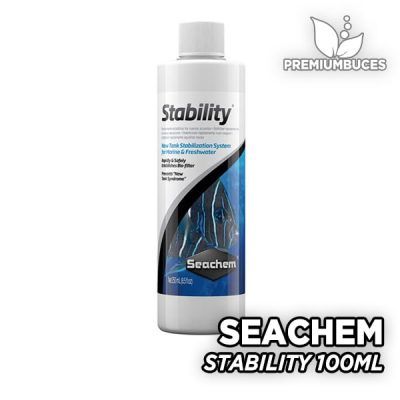
REMOVE THE ALGAE IN A LOCATED AREA
Here we would like to show you a way to control algae at a specific point. This method does not treat the entire aquarium with a algicidebut it is useful for remove small areas where algae have appeared, like stones and wood.
For this, you will need a standard disposable syringe like those that can dose 5ml of liquid and Hydrogen peroxide or GlutaraldehydeWe will explain the doses of each type of liquid in relation to the aquarium water in the following points.
This method is applied to aquarium algae under water, we call it “fogging”. To do this, extract the amount of liquid necessary to treat the volume of the aquarium with the syringe. If the amount of algae is greater than the volume that we can apply in one dose with the syringe, you must repeat this process on different days. For this method to work the current in the aquarium must be as weak as possible. Unplug filters and motion pumps before starting. Then spray the liquid underwater directly into the areas where the algae grow. Be sure to do not spray any animal or plant with the liquid, as it could cause damage. Especially mosses and liver plants are more sensitive and direct contact with algicides can have negative effects on them. After a few minutes while the liquid takes effect, the filter and the pumps are plugged in again.
Repeat this treatment once a day for three or four days in a row. This is sufficient in most cases and will directly remove the algae. If after this time there are still algae, repeat the treatment leaving a two-day pause to give the aquarium biological system some time to recover.
ELIMINATE THE ALGAE WITH OXYGEN WATER
Si tu aquarium is completely full of algae it is recommended to treat the entire aquarium with hydrogen peroxide (H2O2). This method should always be considered as a last resort and should only be applied when the standard methods described at the beginning of this article have failed and there is no way to get rid of algae. Use as high and low a dose as possible to prevent animals in your aquarium from being excessively stressed or damaged. Some aquatic plants may temporarily change to a lighter color, but this is not necessarily a sign that the plant is dead and they will soon recover.
We recommend using a 3% hydrogen peroxide. Make sure that the solution is not a higher percentage, as it can lead to errors in the calculations and lead to an overdose that can cause serious damage to the aquarium. He hydrogen peroxide is especially effective against algae green and blue-green algae cyanobacteria. It is denser than water and sinks.
The dose of Oxygenated Water to eliminate algae is 20 ml for every 50 liters of water inside the aquarium. If possible treat algae in localized areas.
If the treatment is done in general, in the water column the dose can be increased to 35 ml for every 50 liters of aquarium water.
Immediately after adding hydrogen peroxide (hydrogen peroxide), numerous small air bubbles will form in the treated areas. These bubbles are made of pure oxygen and are not harmful to aquarium animals or plants.
Whether you use the hydrogen peroxide method or the glutaraldehyde method, cannot be used at the same time.
ELIMINATE THE ALGAE WITH GLUTARALDEHYDE
El Glutaraldehyde It is especially suitable for controlling red algae such as deer horn algae or black beard algae. These algae are difficult to remove manually. So a glutaraldehyde treatment is a pretty good solution. This liquid is also suitable for combat small occurrences of algae blue-green or green algae in an aquarium. However, to combat these types of algae, we recommend a treatment specifically with hydrogen peroxide as we explained in the previous point, since it is more efficient against green algae and cyanobacteria.

As a note, we have to say that Glutaraldehyde, depending on the dose, can consume a lot of oxygen in the water. Therefore, we recommend the use of this liquid in the morning, at the beginning of the photoperiod. If you treat for many days and with a high dose of glutaraldehyde, make sure that your aquarium is well aerated. For this you can add an aerator with a diffuser stone or raise the filter outlet to agitate the water surface and facilitate gas exchange.
Be sure to use a dose of glutaraldehyde 2%.
La Glutaraldehyde 2% dose is 1 or 2 ml for every 50 liters of aquarium water applying it to targeted areas of algae.
If the treatment is done in the water column the dose can be increased to a maximum of 4 ml per 50 liters of water.
If you added more liquid from the account, change as much water as possible (at least 50%) as a countermeasure.
Of course, hydrogen peroxide and glutaraldehyde solutions should not be mixed or added on the same day, but leaving a gap between treatments would not be a problem.
SAFETY INFORMATION AND DISCLAIMER
If you use a commercial algicide, read the safety instructions for each product before using it. Both hydrogen peroxide and glutaraldehyde must use with caution, avoids direct contact with the skin, eyes and mouth, as well as direct contact with animals and aquatic plants. We recommend the use of protective equipment such as glasses and gloves. Use the methods mentioned above at your own risk. We do not assume any responsibility for the damages that may be caused as a result of this treatment..
If you want to know more information about algae and how to eliminate them, you can see this playlist on Youtube from our partner Álvaro from Aquariumblog, where all these algae are treated in great detail:
Other articles of interest may be:
Rate this article:
Buy Anti-Algae and Additives for Aquarium

